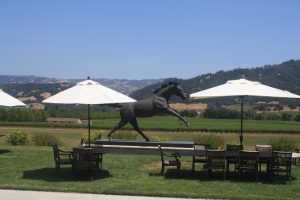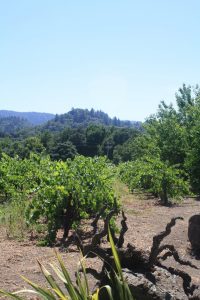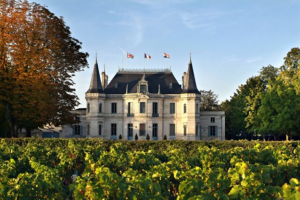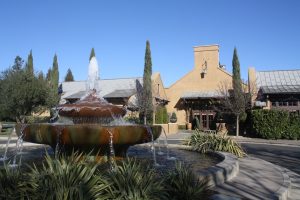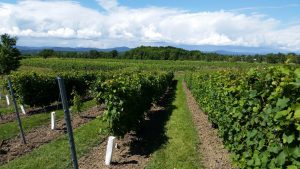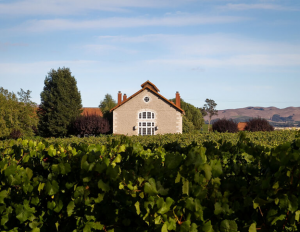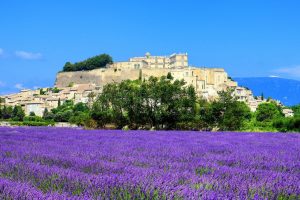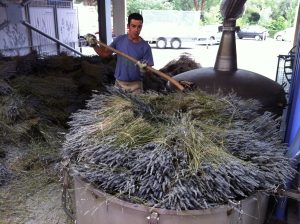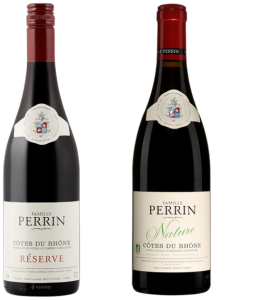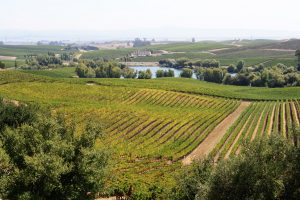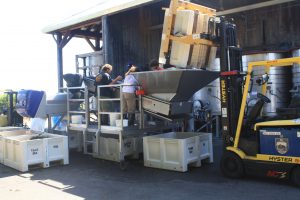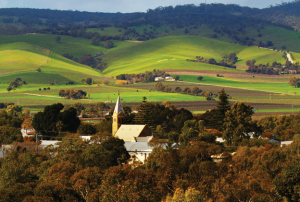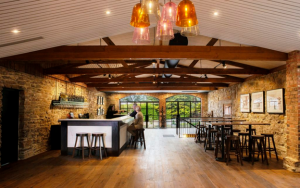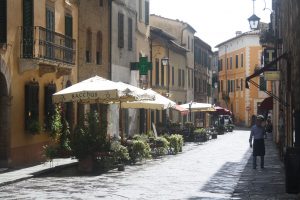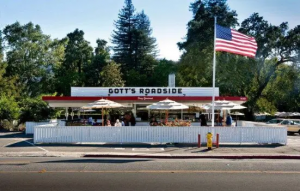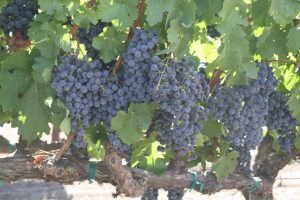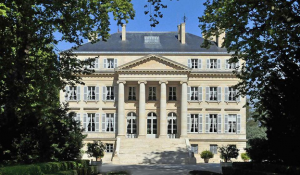Our experience with Pinot Noir has been rather strange. For a long time, we just didn’t care for wines made from this grape. Too thin. Too acid. Too pricy. We would continue tasting Pinot Noirs in our travels but we never got that kick that lovers of Burgundy wines have written and talked about. Then on one wine tasting trip about a decade ago, the light bulb came on.
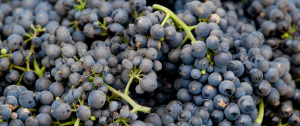 Pinot Noir grapes. Photo courtesy of LaCrema winery.
Pinot Noir grapes. Photo courtesy of LaCrema winery.
We were in the Carneros region of Napa Valley at the Etude winery. They’re equally well-known for their Cabernet Sauvignons as for their Pinot Noirs, so it was our intent to savor the big California boomers. Since Pinot Noir was included in the tasting, why not try it? That was the moment that changed everything; we became club members from that moment and still are.
On that trip and since then, we have been all over Carneros and have found many other wineries specializing in Pinot Noir. Saintsbury and Domaine Carneros (yes, the same maker of California sparkling) are particular favorites. But we have expanded our horizons. We were dining at the late, lamented Hurley’s restaurant in Yountville and they had a weekly special wine from a place we’d never heard of, Santa Lucia Highlands. Another aha moment and we’ve been buying wines from there ever since.
We’ve enjoyed Pinot Noirs from the Santa Rita Hills near Santa Barbara, from Russian River and Sebastopol in Sonoma County, and in Oregon’s Willamette Valley. We enjoyed them in Burgundy’s Côte d’Or quite a while ago, but then seemingly lost our taste for them (and regained it, too). To this day, we prefer California Pinot Noirs to the originals from France. That may have something to do with the astronomical prices for grand cru Burgundies.
So were we wrong in the days when Pinot Noir didn’t appeal to us? Not really, but did our taste change or did the wines? To this day, we find some very well-regarded wines from Russian River and Green Valley in Sonoma County to be thin, acid and overpriced, just as we did in the past. As you can read in our opening statement on Power Tasting’s front page, tasters need to know what they like. That implies that we need to know what we don’t like, as well.
In general, we go for more robust Pinot Noirs, so some wine educators have told us that we want wines made for Bordeaux drinkers. There’s probably a little truth in that, but we think it misses the point. There are Cabernet Sauvignons that we don’t care for (and Syrahs, and Chardonnays, and Tempranillos and, and, and…) and many others that we love. We always appreciate well-made wines that respect the nature of the grapes and reflect the hand of capable winemakers.
We don’t want a Pinot Noir that’s like a Cabernet Sauvignon. We like Pinot Noirs that show the complexity of the grape, with subtle aromas and some deep notes that accompany the overall roundness that Pinot Noir can achieve.
That’s not too much to ask, is it?
